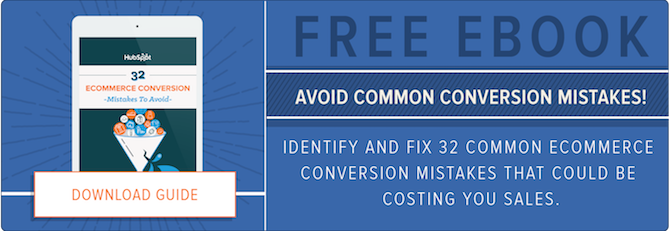 We’ve all visited those ecommerce sites that require registration the moment we arrive, haven’t we? This kind of CTA can potentially bring in quite a few leads, especially if those who visit the page are very interested in the products or services. In many cases, however, visitors will leave immediately, unwilling to part with personal information in exchange for a brief glance at the website.
We’ve all visited those ecommerce sites that require registration the moment we arrive, haven’t we? This kind of CTA can potentially bring in quite a few leads, especially if those who visit the page are very interested in the products or services. In many cases, however, visitors will leave immediately, unwilling to part with personal information in exchange for a brief glance at the website.
Another call-to-action used on a regular basis is the “buy now” CTA found at the top of product pages. This, of course, is placed in the hopes that the online retailer will catch a visitor in a moment of weakness and make an immediate sale. When this is successful, there is no buying cycle, which is awesome. What’s not awesome, however, is the lack of information gathered on the very few who do click those CTAs. With no information, there’s no relationship, and with no relationship, there is rarely a repeat purchase.
Then, of course, there’s the CTA that comes after engaging content on your website, such as blogs, landing pages, videos, and tutorials. When used correctly, this could be your most powerful call-to-action by far. The problem is that too many get caught up in the “easy” way, by either catching leads the moment they arrive or putting CTAs in highly visible places. When a call-to-action is added to pieces of content, they often are used with no thought as to how it relates to the blog or landing page. For this reason, many now believe that the CTA is no longer viable.
So, with all of this knowledge, how can you make sure your CTA is not only viable, but a powerful tool in your marketing toolbox? Here are 3 ways:
1. Always Consider Your Marketing Funnel
Like we said, it’s fun to gain a customer immediately, but you should never aim only for customers that buy right away. Instead, your marketing funnel should always be at the forefront of your mind when creating content.
Your most loyal customers will be those who visit your site regularly, devour your content, and make thoughtful purchases. These are also the customers whose lifetime value can be increased over time through excellent service, quality products, and personalized marketing.
That’s what we all want, right?
2. Tell Stories
The content you share shouldn’t just be about securing a purchase. Yes, purchases are what keep you in business, but they’re not what inspire loyalty. Make sure your content meshes with your vision and brand identity, and then let it all fly.
As you create your content, keep your marketing funnel in mind. What can you create that will help gain visibility for your company? How will you reach those who have never experienced your products or services before? This is the top of your funnel.
Next, what can you give your visitors that will bring them back for more? What stories can you tell that will help them develop a connection to your company and your products? How can your buyers identify with your team members? Any content you provide that supports your story will go a long way toward building a relationship.
Finally, you can ask for the sale. Only after you’ve solidified a relationship with your potential buyers should you try the “buy now” CTA. Even then, you’ll find several just aren’t ready to make a purchase. They’ll go right back to your content from the middle of the funnel over and over before they’re ready.
3. Create Thoughtful CTAs That Fit Your Stories
Now, only once in this process did we mention a call-to-action, but that doesn’t mean you shouldn’t use them. You should simply make sure the CTAs you use match the content you’re sharing. Create offers that will allow your visitors to learn more about your company, products, services, and team members before you move them down to the middle of the funnel.
Once there, provide CTAs that make your buyers part of the story. Ask them to chime in on blogs, Facebook posts, and Twitter. Your CTA doesn’t have to be about selling something at all. You could give them the chance to tweet a friend from your page, share your content on their blogs, or download ebooks with more information about your company.
Only at the bottom of the funnel should your CTA be about buying, and even then, it should match the content you shared. If the call-to-action isn’t relevant, it’s useless. Your buyers will just ignore it.
Now, with these steps, do you think it’s still possible that CTAs are obsolete? Or do you think perhaps online retailers have forgotten how to use them correctly? We’d love to hear your thoughts, so leave us a comment!



